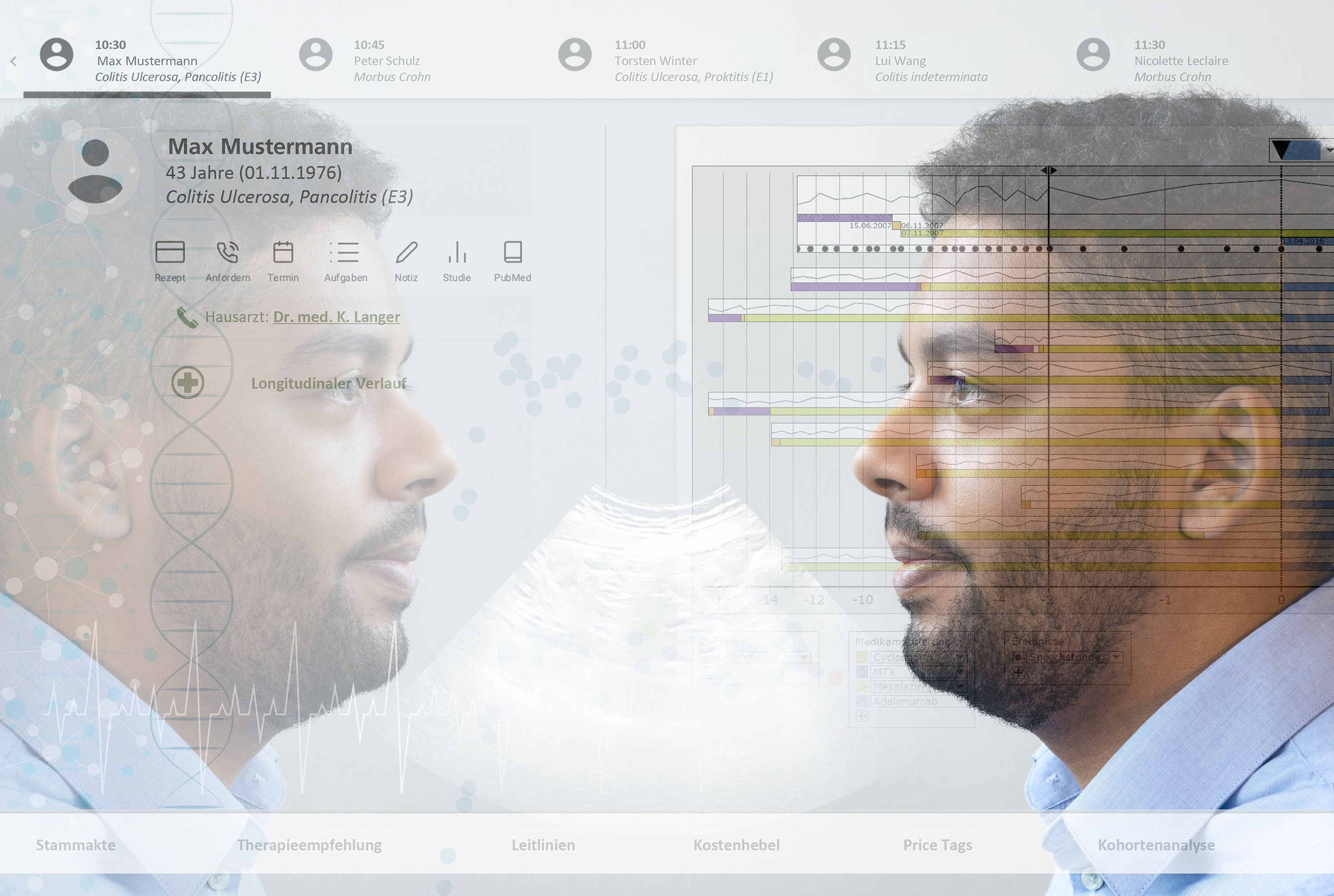Fraunhofer Institutes present the first prototype for digital twins of patients
Optimum prevention, diagnosis and treatment in just one click: As part of the “MED²ICIN” lighthouse project, seven Fraunhofer Institutes are presenting the first prototype of a digital patient model. This prototype revolutionizes the very foundation of personalized and cost-optimized treatment, opening up new perspectives. It has already been tested at University Hospital Frankfurt.

“This prototype of a digital patient model marks the start of a new era in patient treatment,” says Dr. Stefan Wesarg, Head of Competence Center Visual Healthcare Technologies at the Fraunhofer Institute for Computer Graphics Research IGD and MED²ICIN Coordinator.
To date, diagnosing and treating chronic conditions such as multiple sclerosis, cancer or dementia has been an extremely complex and costly process. This can not least be at-tributed to data management: Despite continuous improvements in how patient data (e.g., medical history interviews, MRI scans, laboratory tests or courses of treatment) are digitally recorded and stored, these data remain unstructured and are not always available to those treating the patient. Meaningful processing, aggregation and visuali-zation of patient data and direct access to the latest study data or clinical guidelines is not possible during patient presentations in daily clinical practice.
Digital twins for optimum patient care
The MED²ICIN lighthouse project combines all of a patient’s various medical data and collates this with parameters from population studies and data on specific clinical pic-tures, such as diagnostics, disease progression, medication or therapy of others with the same condition. Taking into consideration clinical guidelines and health economic aspects, a holistic digital patient model is produced – a digital twin.
University Hospital Frankfurt has already started working with the digital twin devel-oped by Fraunhofer. It is being evaluated and implemented by applying it in the con-text of chronic inflammatory bowel disease (IBD). To that end, data from over 600 IBD patients for 170 different parameters are available. Collaboration such as this with University Hospital Frankfurt provides the Fraunhofer Institutes with a significant ad-vantage: “Based on the feedback provided by doctors, we can already respond in a targeted manner to the needs and wants of those who will actually use the system in the future,” explains Wesarg. The project also involves interdisciplinary cooperation between the seven participating Fraunhofer Institutes. By combining their outstanding expertise in various fields, the institutes are uniquely equipped for developing this kind of digital patient model.
The users in this current phase of the project are medical professionals at the hospital who are involved in treating mostly inpatients with complex disease progression. At a later stage, registered specialists will also be involved and patients are expected to be granted access too. The same applies to research institutes and health insurance funds. Fraunhofer researchers therefore want to market the solution jointly with life science companies and technology providers in healthcare IT.
Optimizing public health spending
“With this digital twin, we don’t just have the potential to significantly improve the care provided to individual patients,” says Wesarg. According to the scientist, public health spending can also be optimized. Intelligent resource management is paramount if we are to meet the challenge of demographic change. Technology-driven innovations such as the Fraunhofer MED²ICIN lighthouse project help to effectively manage contin-ually rising costs to ensure patients receive the best possible care. By drawing on a data pool of similar cases and an analysis of this data, the lighthouse project goes far be-yond existing digitalization projects such as electronic patient records or hospital infor-mation systems (HIS).
Modular dashboard for data visualization
In MED²ICIN, data are processed and visualized on a modular dashboard. The interface is designed in such a way that it is intuitive to use and can be adapted to the individual user. For example, a 3D model of the human body and the organ system is integrated; however, the displayed information is much more detailed than standard 3D models. The dashboard provides medical professionals with extensive, data-driven decision sup-port to help find the best individualized treatment.
MED²ICIN has been developed as a generic model and can be used for a whole host of medical issues relating to a range of clinical pictures, such as those pertaining to the cardiovascular system or oncology. The project was developed in strict compliance with the EU General Data Protection Regulation (GDPR). All data are pseudonymized and cannot be attributed to individuals. The four-year lighthouse project was launched in October 2018. Following the success of initial tests, the digital patient model is current-ly being further developed and the project is looking for suitable IT partners that can implement the solution in hospitals.
Further information:
- Mehr über MED²ICIN (websites.fraunhofer.de)
 Fraunhofer Institute for Computer Graphics Research IGD
Fraunhofer Institute for Computer Graphics Research IGD